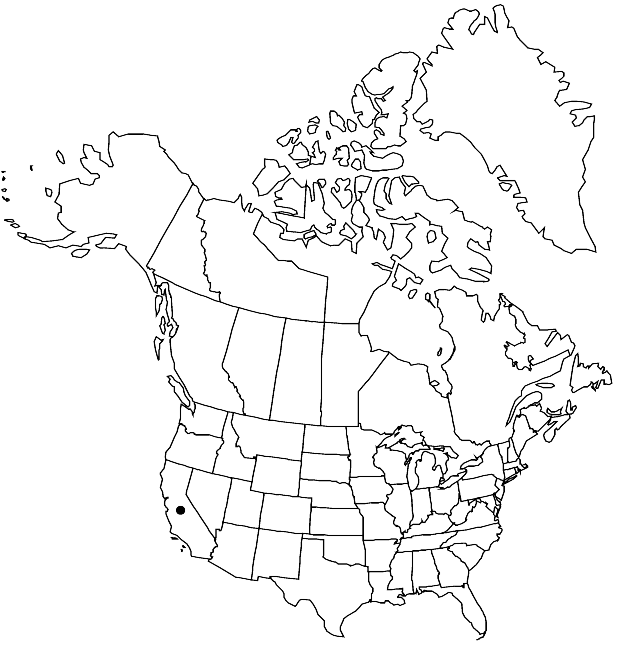Draba breweri
Proc. Amer. Acad. Arts 23: 260. 1888.
Perennials; (cespitose, grayish pubescent); caudex branched (sometimes covered with persistent leaf bases, branches short, compact); sometimes scapose. Stems unbranched, (0.1–)0.2–1(–1.5) dm, pubescent throughout, trichomes stalked, 4–10-rayed, 0.1–0.3 mm. Basal leaves rosulate; petiolate; petiole base ciliate, margin not ciliate, (trichomes simple and 2-rayed, 0.3–0.8 mm); blade oblanceolate to obovate, (0.3–)0.4–1.5(–2.5) cm × 1.5–3(–5) mm, margins usually entire, rarely dentate, surfaces densely pubescent with stalked, 4–10-rayed, stellate trichomes, 0.1–0.2 mm (sometimes 1 or more rays spurred). Cauline leaves 0–3(–6); sessile; blade oblong or lanceolate to ovate, margins entire (sometimes ciliate at base), surfaces usually pubescent as basal. Racemes (5–)7–18(–24)-flowered, ebracteate, slightly to considerably elongated in fruit; rachis not flexuous, pubescent with stalked, 4–10-rayed trichomes, (0.1–0.3 mm). Fruiting pedicels ascending, (sometimes slightly appressed to rachis), straight, 1.5–3(–4) mm, pubescent as rachis. Flowers: sepals (persistent), ovate, 1.2–2 mm, pubescent, (trichomes short-stalked, 2–6-rayed); petals white, spatulate to oblanceolate, 2–3 × 0.7–1.1 mm; anthers ovate, 0.2–0.25 mm. Fruits lanceolate or oblong to linear, usually slightly to strongly twisted, rarely plane, flattened, 3.5–9(–11) × 1.5–2.5 mm; valves pubescent, trichomes short-stalked, 2–5-rayed, 0.05–0.25 mm; ovules 28–40 per ovary; style 0.1–0.3(–0.4) mm. Seeds ovoid, 0.5–0.7 × 0.3–0.5 mm. 2n = 32.
Phenology: Flowering Jul–Aug.
Habitat: Rock outcrops, talus, exposed ridges, alpine areas
Elevation: 3100-4100 m
Discussion
The circumscription of Draba breweri was expanded by R. C. Rollins (1993) to include D. cana. Plants of D. cana differ from those of D. breweri by being non-cespitose (versus cespitose) and taller [(4–)10–30(–38) versus (1–)2–9(–15) cm], and by having basally bracteate (versus ebracteate) racemes, and stems, pedicels, and sepals pubescent with a mixture of simple and branched (versus exclusively branched) trichomes. Draba breweri is known to us from Alpine, Fresno, Inyo, Mono, Plumas, Tulare, and Tuolumne counties.
Selected References
None.
